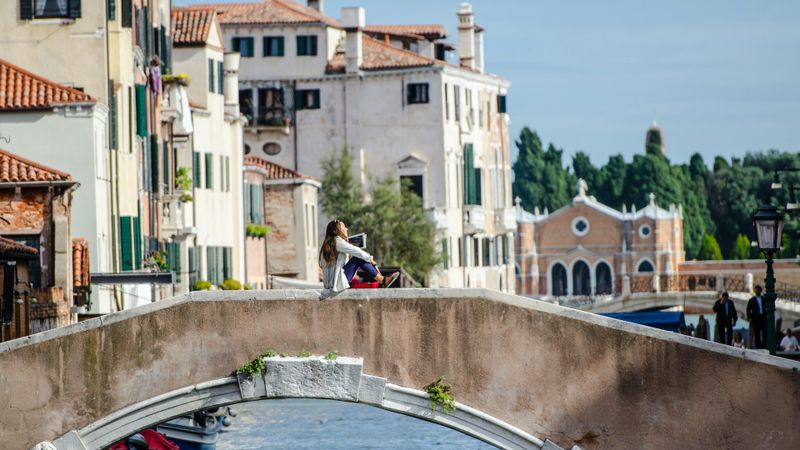Venice, one of the most fascinating and mysterious cities in the world, captures the imagination of visitors with its canals, bridges and rich history.
But among all its peculiarities, there is one question that often arises in the minds of travelers: why are Venice's neighborhoods called sestieri?
Why are the neighborhoods in Venice called sestieri? The origin of sestieri: an ancient Roman heritage

Why are neighborhoods called sestieri in Venice? To understand the origin of Venetian sestieri, we need to go back in time to the time of ancient Rome.
At that time, the term "sestiere" was used to refer to the fourth part of a Roman military encampment, a logistical subdivision that facilitated control and administration of the territory.
This practice of dividing cities into sestieri spread widely throughout Europe, becoming a common urban pattern in many cities on the continent.
In Venice, this tradition has been maintained and adapted over the centuries, resulting in the six sestieri that make up the city today.
The six sestieri of Venice: names and meanings
Each sestiere in Venice has a unique history and meaning, reflecting the geographical and historical characteristics of the area it represents. Here is an overview of the six Venetian sestieri and their names:
San Marco: The sestiere is named after the majestic St. Mark's Basilica, a symbol of Venice. It is the beating heart of the city, home to important monuments and places of interest.
San Polo: This sestiere derives its name from the main square, Campo San Polo, which is the second largest square in Venice after St. Mark's Square.
Cannaregio: The name of this sestiere seems to derive from the "Canale Regio," the main navigation canal that connected Venice to the mainland. The area was originally marshy and full of reeds.
Castello: This sestiere takes its name from a fortress that once dominated the area, although no trace of it remains today. It is located in the eastern part of Venice and is known for its narrow alleys and picturesque squares.
Dorsoduro: The name of this sestiere may refer to the compact sand dunes that once characterized the area. It is home to many art galleries, museums and cultural institutions.
Santa Croce: This sestiere comprises the western part of Venice, including the Maritime Station and Piazzale Roma. Its name may derive from the presence of an ancient cross in the area.
Curiosities related to the sestieri
Having discovered why neighborhoods in Venice are called sestieri, we can move on with some interesting trivia.
In addition to their names and historical meanings, Venice's sestieri are also associated with several unique curiosities and traditions:
House Numbers: Venetian houses have very high house numbers, which are unique for each sestiere. This means that house numbers start from one for each sestiere, reaching a maximum of 7000.
Shape of the gondola iron: The shape of the gondola iron, with its six teeth representing the six sestieri and the back tooth seemingly representing the island of Giudecca, is a curious interpretation related to the urban structure of Venice.
The importance of sestieri in the daily life of Venice
In addition to their historical and cultural importance, the sestieri of Venice play a fundamental role in the daily life of the city. Each sestiere has its own identity and distinctive characteristics, which are reflected in its inhabitants, activities and events.
For example, the sestiere of San Marco is known to be the tourist heart of Venice, with its famous square and streets bustling with stores, restaurants and cafes. San Polo, on the other hand, is a quieter and more authentic neighborhood, populated mainly by Venetians who lead a daily life far from mass tourism.
Sestieri are also where many of the Venetian traditions and festivities take place. Each sestiere has its own celebrations and events, ranging from religious festivals to historical regattas, from cultural events to gastronomic festivals.
In addition, sestieri are also important administratively and economically. Each sestiere has its own neighborhood council and infrastructure, which manage local issues and promote the development of the area.
The legacy of sestieri in Venetian culture
The division into sestieri has left a deep imprint on Venetian culture, influencing the city's language, art, and even music.
As an example, many traditional Venetian songs refer to sestieri and their distinctive characteristics. In addition, the Venetian language has developed a specific vocabulary to describe different parts of the city, using terms such as "campiello" to refer to small squares and "calli" for narrow streets.
In Venetian art, sestieri have also played a significant role, providing inspiration to painters, sculptors and poets over the centuries. Many Venetian artworks depict scenes of daily life in the different sestieri, capturing the unique essence of each area.
Why in Venice neighborhoods are called sestieri: Conclusion
Besides why neighborhoods in Venice are called sestieri there are many other things to say about them. Venice's sestieri represent more than just a geographical subdivision of the city.
They are the tiles of a mosaic rich in history, culture and traditions that help make Venice one of the most fascinating and evocative cities in the world.
Through their names, histories and peculiarities, the sestieri invite us to explore and discover the magic of this unique city.

